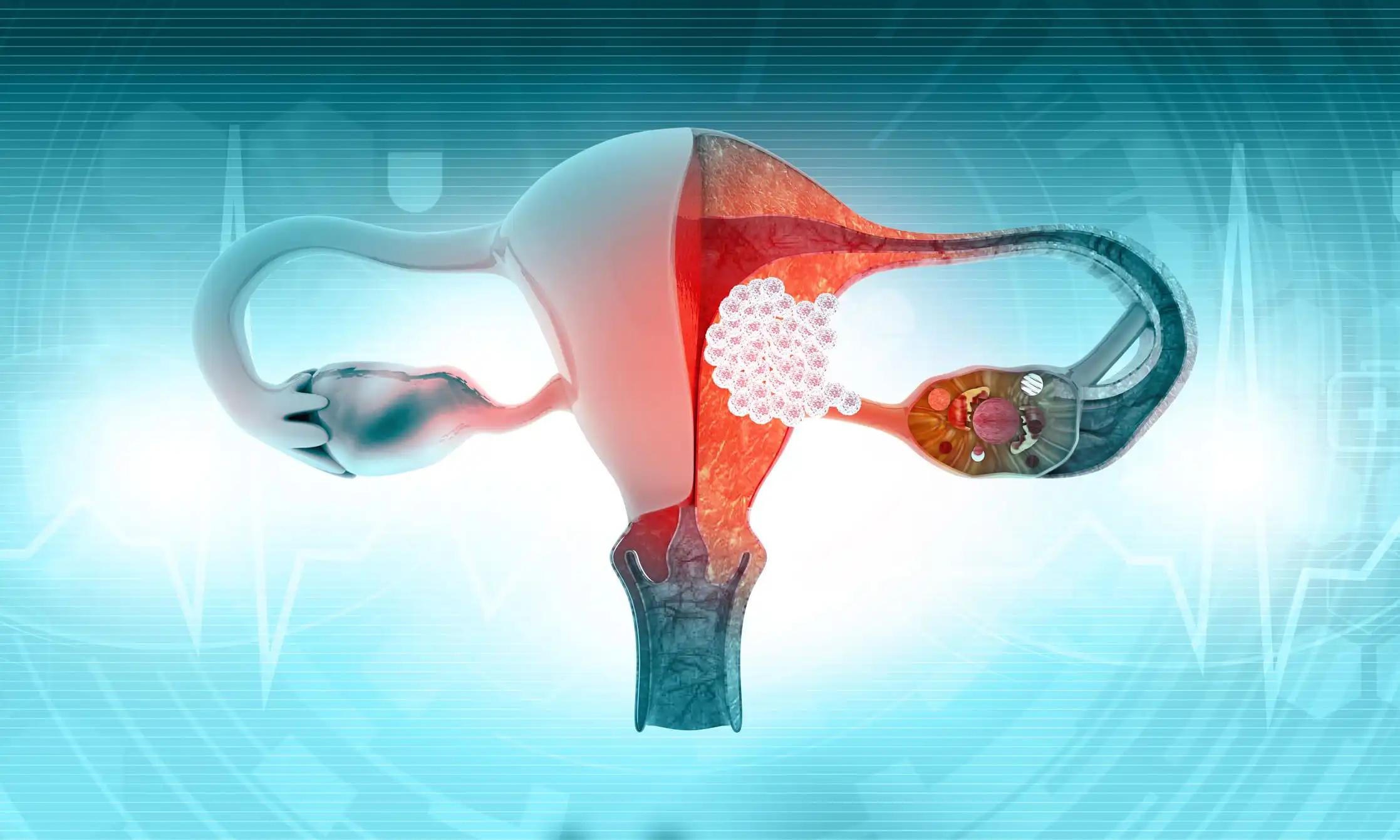KEY TAKEAWAYS
- The ROCSAN phase 2 and 3 trials aimed to investigate the potential synergy between PARPi and anti-PD1 in CS, considering their DNA damage response.
- The primary endpoint was to determine the optimal strategy, either N or ND, based on 16-week response rate.
- The ROCSAN step 1 didn’t achieve the primary endpoint for 16-week response rate, but suggested benefits for ND over CT.
Carcinosarcomas (CS), rare and highly aggressive gynecological carcinomas, typically yield poor outcomes. After platinum-based chemotherapy (CT) relapse, median Progression-Free Survival (PFS) is under 4 months. Notably, CS were not included in the Keynote755 trial.
Given CS’s marked DNA damage response activity and potential for a high tumor mutational load leading to neo-antigens, synergy between PARPi and anti-PD1 treatments is anticipated.
Isabelle L. Ray-Coquard and the team aimed to assess the potential synergistic effect of PARPi and anti-PD1 therapies in treating CS.
In an open-label study registered under NCT03651206, utilizing a two-stage design, patients were allocated in step 1 to receive niraparib (N), niraparib with dostarlimab (ND), or chemotherapy (CT) in a 2:2:1 ratio. Stratification for randomization was based on the number of previous chemotherapy lines, FIGO stage, tumor localization, and performance status.
The primary objective was to determine the superior experimental strategy between N and ND based on Response Rate (RR) at 16 weeks using RECIST 1.1 criteria. Secondary endpoints comprised best objective RR, disease control rate (DCR), safety, overall survival (OS), and quality of life (QoL). An interim analysis at the phase II conclusion will be conducted by an Independent Data Monitoring Committee, potentially paving the way for subsequent phase III enrollment (part 2).
The results revealed that in the phase II study, 64 patients with recurrent or progressing endometrial or ovarian carcinosarcoma after at least one line of platinum-based chemotherapy were randomized (N=26, ND=25, CT=13). The median age was 70 years (range 34-84). The 16-week response rates were 3.8%, 12.0%, and 15.4% respectively for arms N, ND, and CT.
The overall response rates (ORR) were 3.8%, 20%, and 15.4%, while the 8-week disease control rates were 26.9%, 52%, and 30.8% in arms N, ND, and CT respectively. With a median follow-up of 11.2 months, the median PFS was 2.0 months (95%CI, 1.9-2.2), 2.7 months (95%CI, 1.9-3.7), and 1.9 months (95%CI, 1.7-3.6) in arms N, ND, and CT respectively. The median OS was 6.7 months (95%CI, 3.8-9.6), 6.3 months (95%CI, 3.9-12.4), and 4.5 months (95%CI, 3.0-NE) in arms N, ND, and CT respectively. The percentage of adverse events grade >3 was 69.2%, 68%, and 69.2% respectively.
The study concluded that although ROCSAN step 1 did not meet the primary endpoint for 16-week response rate (>20%), findings suggested potential benefits for ND over CT regarding disease control rate, median overall survival, and safety in this rare and challenging patient population.
The trial is sponsored by the ARCAGY/ GINECO GROUP.
Source: https://cslide.ctimeetingtech.com/gynae24hybrid/attendee/confcal/show/session/21
Clinical Trial: https://clinicaltrials.gov/study/NCT03651206
Ray-Coquard IL, Bellesoeur A, Fabbro M, et al. (2024). “34O – ROCSAN: A multicentric randomized phase II/III evaluating dostarlimab in combination with niraparib versus niraparib alone compared to chemotherapy in the treatment of endometrial/ovarian carcinosarcoma after at least one line of platinum-based chemotherapy – Preliminary results.” Presented at ESMO GC 2024. (340)



